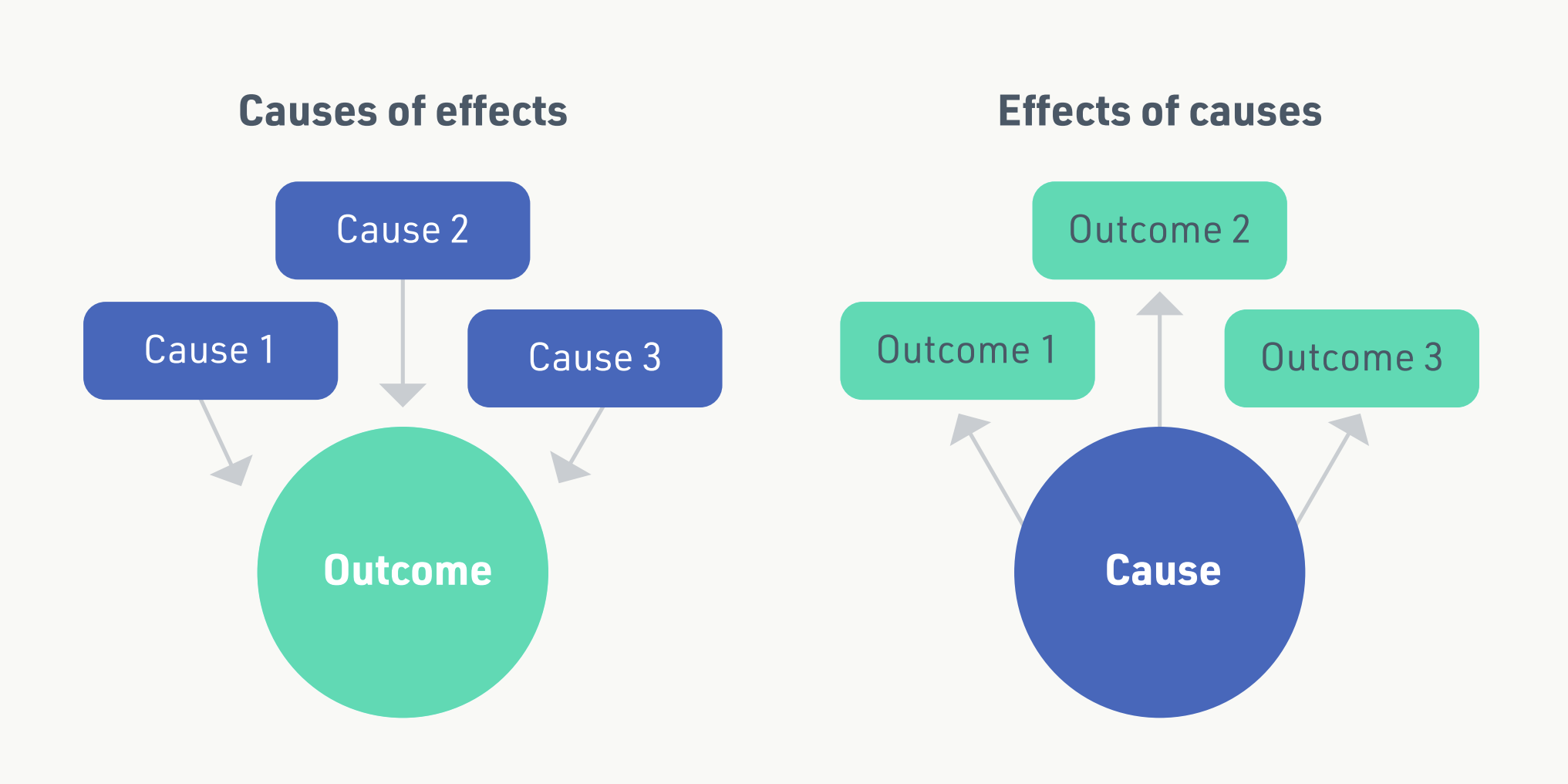What is causation?
Causal inference is key to impact evaluation. An impact evaluation should allow the evaluator to judge whether the intervention being evaluated caused the outcome being measured. Causation differs from correlation. If you are unsure of this difference, please watch this TASO causality webinar.
Different approaches to impact evaluation can invoke different understandings of causal inference. There is a fundamental distinction between the two types of question that social scientists ask when using the tools and techniques of social science in evaluation. First, they may ask the question: what are the effects of a causal factor (i.e. an intervention or treatment)? Second, and in contrast, they may ask the question: what are the causal factors that give rise to an effect? These questions are what Dawid (2007) calls ‘effects of causes’ and ‘causes of effects’ type questions (Figure 1).
A classic ‘effects of causes’ approach to impact evaluation would be a randomised controlled trial (RCT) design. This is what the OfS standards of evidence refer to as a ‘Type 3’ evaluation. Randomised experiments are used widely in evaluation and are designed to establish whether there is causality between an intervention and the outcomes. In its simplest form, a randomised experiment involves the random allocation of subjects to intervention and control groups. Subsequent differences in the average outcomes observed in these two groups are understood to provide an unbiased estimate of the causal effect of the intervention. The design draws on the tradition of controlled experiments in medicine, psychology and agriculture but has been developed to evaluate social programs. Where randomised experiments are not possible, several ‘quasi-experimental’ designs have been developed that replicate the experimental logic (Shadish, Cook and Campbell, 2002).
In a ‘causes of effects’ approach to impact evaluation, the intervention is understood as producing effects through mechanisms which, as Cartwright and Hardie (2012) describe, act as just one ingredient in a ‘causal cake’. The various relevant ingredients need to be identified, defined and explored before the causal question can be fully addressed, and causation or otherwise inferred. Here the emphasis is on an explanation of the effects or outcomes that are altered through the triggering of causal mechanisms. Specifically, the evaluation is concerned with the role of the intervention in these processes. In other words, causes work together in causal packages to produce effects (Cartwright & Hardie, 2012). The ‘small n’ approaches to evaluation described here are based on the ‘causes of effects’ approach to impact evaluation.
